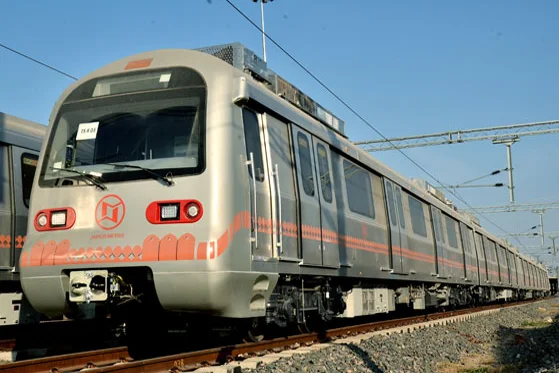The Jaipur Metro is a rapid transit system serving the capital city of Rajasthan, Jaipur. Designed to address growing traffic congestion and to promote a more sustainable mode of transportation, the Jaipur Metro combines modern infrastructure with regional aesthetics. It is the sixth metro system in India after those in Kolkata, Delhi, Bangalore, Gurgaon, and Mumbai.
🔹 History and Development
The Jaipur Metro project was executed by the Jaipur Metro Rail Corporation Limited (JMRC), a state-owned enterprise. The construction began in November 2010, and the first phase became operational on June 3, 2015. The system was inaugurated by then Chief Minister Vasundhara Raje.
🔹 Metro Lines
Currently, the Jaipur Metro consists of one operational line: the Pink Line (Phase 1A and 1B).
- Pink Line (Mansarovar to Badi Chaupar):
- Total length: 12.07 km
- Stations: 11
- Route: Mansarovar – New Aatish Market – Vivek Vihar – Shyam Nagar – Ram Nagar – Civil Lines – Railway Station – Sindhi Camp – Chandpole – Chhoti Chaupar – Badi Chaupar
- The Pink Line connects the western residential area of Mansarovar with the historical core of Jaipur near Badi Chaupar, close to landmarks such as Hawa Mahal and Johari Bazaar.
The extension from Chandpole to Badi Chaupar (Phase 1B) was opened in September 2020 and includes underground stations designed in Rajasthani architectural styles.
🔹 Features and Facilities
- ⏱ Frequency: Trains typically run every 10–15 minutes.
- 🚆 Rolling Stock: The metro uses modern, air-conditioned trains manufactured by BEML (Bharat Earth Movers Limited).
- 🛂 Security: All stations are equipped with baggage scanners, CCTV cameras, and personnel for safety.
- ♿ Accessibility: Escalators, elevators, and tactile tiles are provided for differently-abled passengers.
- 💳 Ticketing: Passengers can purchase tokens for single journeys or use smart cards for multiple trips. Rechargeable cards offer convenience and discounts.
🔹 Operating Hours
The metro operates from approximately 6:00 AM to 9:45 PM daily, though timing may vary slightly depending on the day and station.
🔹 Future Expansion
The proposed Orange Line (East-West Corridor) is part of Phase 2 and will eventually connect Sitapura Industrial Area to Ambabari. This will enhance connectivity to Jaipur’s educational institutions, IT hubs, and industrial zones.
🔹 Tourist Benefits
Jaipur Metro provides easy access to several tourist attractions such as:
- Jaipur Railway Station
- Sindhi Camp Bus Terminal
- City Palace
- Hawa Mahal
- Jantar Mantar
This makes the Metro a convenient option for travelers wishing to explore Jaipur without navigating busy roads.
🔹 Environmental Impact
By reducing dependence on private vehicles, the metro system contributes to lowering pollution and easing traffic congestion in the city.
In summary, the Jaipur Metro offers a clean, efficient, and affordable transportation option that blends modern engineering with the cultural heritage of the Pink City. It continues to grow as an essential part of Jaipur’s urban mobility plan.
